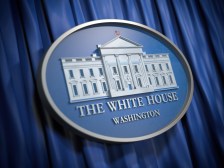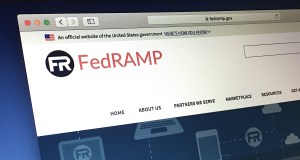EPA defiant on social media ‘propaganda’ ruling
The Environmental Protection Agency is pushing back hard against an auditors’ opinion that found it broke the law in a social media campaign fostering support for a controversial new rule on American waterways.
In a blog post Thursday, the agency’s Director of Public Affairs Liz Purchia accused a “small but vocal group” of critics of stoking the row in an effort to “distract from and derail” EPA’s work on President Obama’s climate change policy and in particular the recent Paris deal on limiting carbon emissions.
Earlier this week, auditors from the Government Accountability Office issued an opinion on the EPA’s public awareness campaign about its Waters of the U.S. rule, in response to complaints over the summer from conservative lawmakers, headed by Sen. James Inhofe, R-Okla.
Even without the sharp political edge it gets from GOP attacks on climate science, the dispute highlights how new social media tools threaten to outrun the rules developed in an earlier era, creating a potential legal minefield for agencies as they seek to engage the public during the bitterly fought run-up to next year’s presidential election.
The GAO found most aspects of the EPA’s campaign were lawful but came down on the agency for engaging in “covert propaganda” because it failed to identify itself as the author of an automated social media message launched by an application called Thunderclap.
Thunderclap allows an organization to recruit social media supporters for a campaign, and once their numbers reach a certain threshold, Thunderclap sends out a single message from all supporters’ Facebook, Twitter and Tumblr accounts. But that message did not identify EPA as its author. “While EPA’s role was transparent to supporters who joined the campaign, this does not constitute disclosure to the 1.8 million people potentially reached by the Thunderclap,” the GAO said.
Auditors also hammered the agency for “grassroots lobbying” by hyperlinking one of its blog postings to two advocacy group webpages which displayed or linked directly to messages urging visitors to lobby Congress in support of clean water rules.
“When EPA hyperlinked to the NRDC and Surfrider Foundation webpages using an official communication channel belonging to EPA and visually encouraged its readers to visit these external websites, EPA associated itself with the messages conveyed by these self-described action groups,” GAO found.
“It is this association combined with the clear appeals actually contained in the webpages that form the prohibited conduct.”
But EPA’s Purchia insists the agency was within the law: “At no point did the EPA encourage the public to contact Congress or any state legislature about the Clean Water Rule. Plain and simple. The rule is an agency action, promulgated by EPA. It’s not even about congressional legislation.”
[Read more: EPA social media post was ‘covert propaganda’ — GAO]
“It’s almost 2016. One of the most effective ways to share information is via the Internet and social media. Though backward-thinkers might prefer it, we won’t operate as if we live in the Stone Age,” she declared.
“We will continue to work with GAO and members of Congress to explain what this is and isn’t,” she concluded.
But it is indeed almost 2016, and this is Washington, D.C. And given the increasingly stormy political weather expected here in the runup to next year’s presidential election, the GAO decision could make social media managers at other agencies a little gun-shy, experts including a former official told FedScoop.
‘A highly charged political environment’
“It’s a highly charged political environment in which any potential infraction is magnified,” said Beverly Macy, an instructor at the UCLA Anderson School of Management who specializes in social media marketing.
The repercussions of the GAO opinion could ripple through the executive branch, said Nathaniel Lubin, a former White House digital strategy director.
“I think any time there’s negative feedback, that could impact people’s decisions to use something. They could be worried their managers are more hesitant to give people who want to push the envelope the space to try new things.”
But he added: “If they’re not willing to push the envelope, they’re not going to be effective. Just because there’s the negative feedback in this particular case doesn’t mean that not taking advantage of digital challenges is an option.”
Lubin also suggested that the latest social media tools might have outrun the rules written for an earlier generation of technology.
“Regardless of the decision in this particular case, these platforms are dynamic and beyond [the technology that] was considered when these initial rules were thought about — and [they] probably need to be updated,” he said.
Tools and training
Uncertainty about exactly how old rules and principles should apply to new technology was famously the reason so many officials were hesitant about adopting social media in the first place. Ines Mergel, an associate professor of public administration at the Maxwell School at Syracuse University who has written about social media in Obama administration, said she was surprised to learn how EPA used Thunderclap for its campaign because a regulatory agency should not be experimenting with lobbying and campaigning social media tools.
Mergel said the General Services Administration negotiates terms of use for social media platforms across the U.S. government — and then offers training webinars for agency staff.
GSA’s spokeswoman did not respond when asked whether the agency’s webinar covered the issue that put EPA in hot water. But a YouTube video of the nearly 50-minute talk, which was run by Thunderclap staff, does not mention the need to identify virally proliferating social media messages as products of a U.S. agency, to avoid falling of afoul of rules designed to prevent deceptive media campaigns seeking to mask the government’s hand.
The EPA also held its own webinar on best practices, but that also didn’t deal with the issue of identifying messages as coming originally from the agency.
“The use part is the interesting piece here — and what you do with the tool,” Mergel said. That’s not to say that the government shouldn’t be using Thunderclap. Even so, she said other agencies may be scared away from using Thunderclap in the future or bring in a legal team to help with their strategy.
“While we’re not familiar with the specific legal details of this particular case, we are approved for use by federal agencies, and we’ve worked with numerous government agencies in the past,” Chelsea Orcutt, head of strategy and outreach at Thunderclap, said in an email.
[Read more: Trying to archive that tweet? One startup has a way]
And even the GAO auditors said the EPA’s hashtag campaigns #DitchtheMyth and #CleanWaterRules were lawful, noted Rob Enderle, an Oregon-based technology analyst. As that shows, federal agencies can advocate for their policies but social media managers there need to be cognizant of additional legal restrictions, he said.
“I think they just need to be aware of the laws that restrict them more than if they were a public company or a individual,” he said. “Like anything else a public agency does, there are rules.”
For the most he said, auditors found the EPA had followed those rules and run a legal campaign. The violations, he added, were more likely to be an oversight on EPA’s part and not elements in a “despicable plot to promote clean water.”
“I think, generally, the EPA did it right,” he said. “Just in this one instance, they did not.”
Reach the reporter at whitney.wyckoff@fedscoop.com, follow her on Twitter @WhitneyWyckoff. For stories like this every day, subscribe to the Daily Scoop at fdscp.com/sign-me-on.
Editor’s note:This story has been corrected to fix a mischaracterization of one interviewee’s view of the FDA’s use of Thunderclap.






